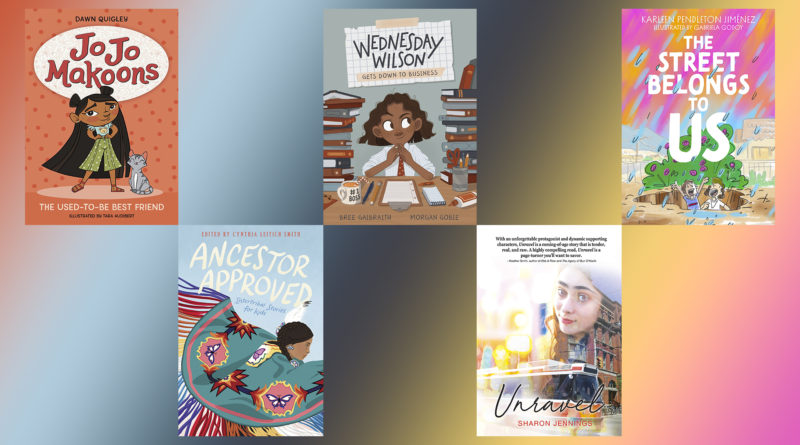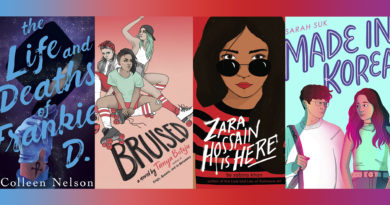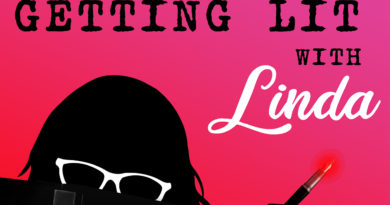Summer Round Up of Recommended Early and Middle Grade Reads
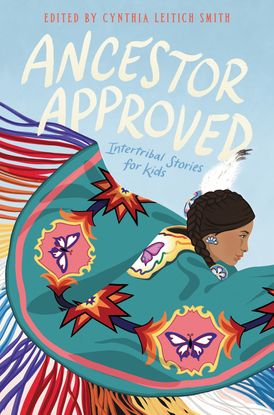
Ancestor Approved: Intertribal Stories for Kids (Heartdrum/HarperCollins)
Recommended Reading Age: 10+
In Ancestor Approved, Native families from Nations across the continent gather at the Dance for Mother Earth Powwow in Ann Arbor, Michigan, where they dance, sing, sell beadwork and books in a high-school gym. Above all, they socialize and celebrate friendship, traditions and heritage.
This uplifting collection of stories and poems, edited by Cynthia Leitich Smith, offers relatable characters and settings. It opens with the rhythmic poem “What Is a Powwow?” by Kim Rogers (Wichita and Affiliated Tribes), which sets the tone for the powwow “where our hearts beat as one/ to the thump of the drum”. The 17 interconnecting stories that follow are written by established and soon-to-be-favourite Indigenous writers. Each is presented through the eyes of a young protagonist (including a savvy, heroic dog named Ozzie) and depicts a close-knit, loving community with the desire to honour ancestors and the past.
The stories portray the joys, struggles of diverse Nations, including the Cree, Ojibwe, Choctaw, Cherokee, Navajo, Abenaki, and Haudenosaunee. Readers will find themselves absorbed in the spirit of community, intersection and resilience in the stories, which are full of goodwill, humour and surprising turns. Aspects of Native culture and contemporary life are explored alongside themes of universal relevance. Monique Gray Smith writes about cultural pride and a boy’s realization of what makes a father in “Fancy Dancer”. Intergenerational relationships and the power of empathy are explored in Kim Rogers’ “Flying Together” and Tim Tingle’s “Warriors of Forgiveness”. Rebecca Roanhorse writes from the perspective of a savvy dog who is committed to the welfare of an elder in “Rez Dog Rules”. In David Roberston’s “Brothers”, two brothers living in different foster families in Canada and the US meet for the first time, as do two cousins from different living conditions in Eric Gans-worth’s “Indian Price”. Brian Young’s companion stories ”Senecavajo: Alan’s Story” and “Squash Blossom Bracelet: Kevin’s Story” depict the same events from two perspectives. The appended glossary with Indigenous vocabulary, notes and author biographies are appealing additions to the stories.
Ancestor Approved in an energetic and engrossing collection that deserves a place on home and classroom bookshelves. It will invite re-readings and inspire readers to look for the work of these authors as well as more Indigenous stories. A companion volume would be entirely welcome!

Unravel by Sharon Jennings (Red Deer Press)
Recommended Reading Age: 12+
Unravel follows almost twelve-year-old Rebecca as she starts to see that her father, Joe, is constantly trying to keep her away from her friends, neighbours and anyone who might judge how they live their lives. Rebecca is being forced to move again as soon as Joe feels neighbors are getting too curious, and she realizes that this is a pattern. Slowly throughout the book, Rebecca starts to put together clues and decides that everything — including Joe — are not who she is told they are.
Unravel is an interesting hybrid of middle-grade and young adult. Its tone is distinctly young — due to its narration by a 12-year old with a strong vocabulary — but the confrontations between Rebecca and her father, and the topics throughout the book feel designed for older readers. It is perfect for mature middle-graders and young high-schoolers.
Jennings packs a lot of story into a succinct 194-word read. Unravel is specific and thorough without being unnecessarily lengthy. My only critique is the unbalanced pacing. The first two-thirds of Unravel provide a lot of context, making it feel slightly slow, while the last third is packed with action and resolves the story too quickly. A more even pace — the first two-thirds with a more urgent pace and the last third slowed down to provide more detail — would enhance the reading experience.
Despite this little quibble, the story is engaging, the tone is unique, and the characters are well-developed. Unravel is a strong novel that is sure to enamour tween readers.
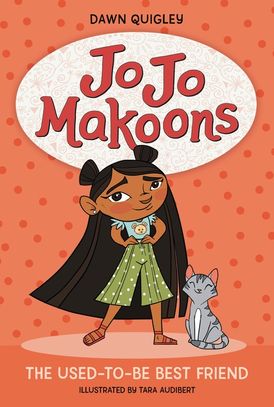
Jo Jo Makoons: The Used-to-Be Best Friend by Dawn Quigley; illustrated by Tara Audibert (Heartdrum/HarperCollins)
Recommended Reading Age: 7+
This novel is the first in a chapter book series featuring a clever Ojibwe girl protagonist, Jo Jo Makoons. It is the first early chapter book to come from Heartdrum, the new Native-focused imprint of HarperCollins. The story introduces readers to Jo Jo, a plucky and precocious 7-year old who lives with her Mom and Kokum on the fictional Pembina Ojibwe reservation. Two worries preoccupy Jo Jo. The first is that the vet’s vaccine will deflate her cat Mimi, who is her home best friend. Her second worry is that Fern, her school best friend, has begun to sit with other students at lunchtime and ignore her. These concerns, combined with a near-calamity involving Mimi at school and a case of creative differences, give way to hilarious hijinks.
Quigley (Turtle Mountain Band of Ojibwe) has given Jo Jo a distinctive narrative voice steeped in organic cultural information about Jo Jo’s Ojibwe way of life, family and traditions. The glossary of Ojibwe and Michif words enriches the reading experience while building a linguistic connection to Jo Jo. There is plenty of humour and delightful wordplay to captivate young readers (and their grown ups), and readers will relate to Jo Jo’s experiences at her school. Jo Jo has friendships with diverse classmates, and her teacher is a well-intentioned White man (whom she calls Teacher) with a comical tendency to miss much of what happens in the classroom. The school and its inhabitants demonstrate clear respect for her language and traditions
Audibert (of Wolastoqey and French heritage) provides lively and expressive black-and-white illustrations that reflect the emotions of the characters and the tensions of the plot. Jo Jo Makoons: The Used-to-Be Best Friend is a delightful and heartwarming book about exploring the emotional terrain of friendships and growing up as an Indigenous child in a loving community.
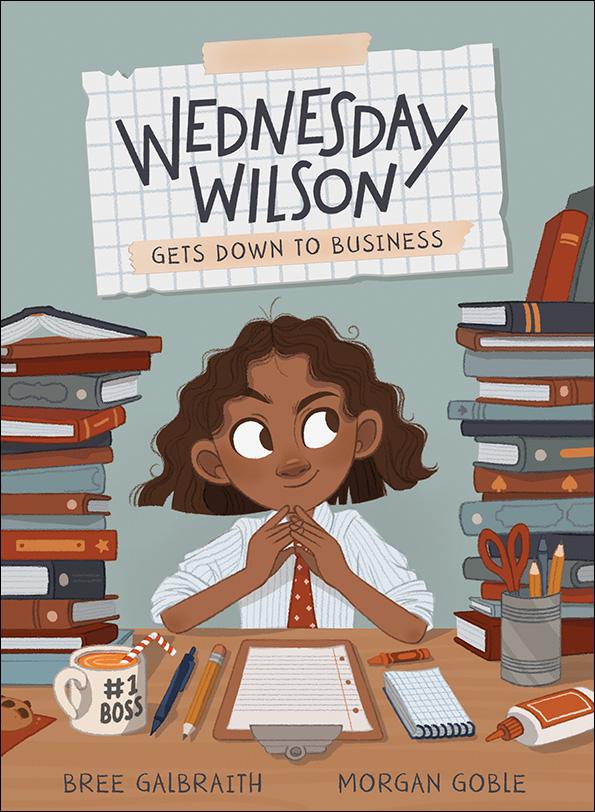
Wednesday Wilson Gets Down To Business by Bree Galbraith; illustrated by Morgan Goble (Kids Can Press)
Recommended Reading Age: 8+
Wednesday August Wilson is a human dynamo: an 8-year-old natural-born entrepreneur, she is perpetually on the cusp of the next great business idea. Yet even with her natural business acumen and advice from two self-employed moms – Mum is an artist, and Mom owns and operates a pizza truck — and even armed with the savings from her allowance (which is contingent on helping others), Wednesday is stalled.
One day at school, she receives unexpected inspiration from a confrontation with her arch-nemesis Emma, who is part of an adversarial foursome whose last names happen to spell MEAN. The incident, focused around kale-throwing (!), puts Wednesday at Emma’s mercy. The only way Wednesday can save herself is to launch a business overnight. A coordinated effort ensues from her team: little brother Mister, brainy best friend Charlie and new classmate Amina. Their desecration of some “problematic” library books with damaging stereotypes leads to an overnight business sensation. Wednesday must then navigate the consequences for herself and her business of breaking school rules and damaging school property, however enlightened the motives.
Although Galbraith does not explore the diversity of her characters as deeply as she might, Wednesday Wilson Gets Down to Business is a funny, fast-paced read with an entertaining plot, a winning protagonist and expressive greyscale illustrations by Morgan Goble that enrich the reading experience. The go-getting Wednesday will strike a chord with future young entrepreneurs who will find the story an energetic romp which is also a fun primer on business basics.
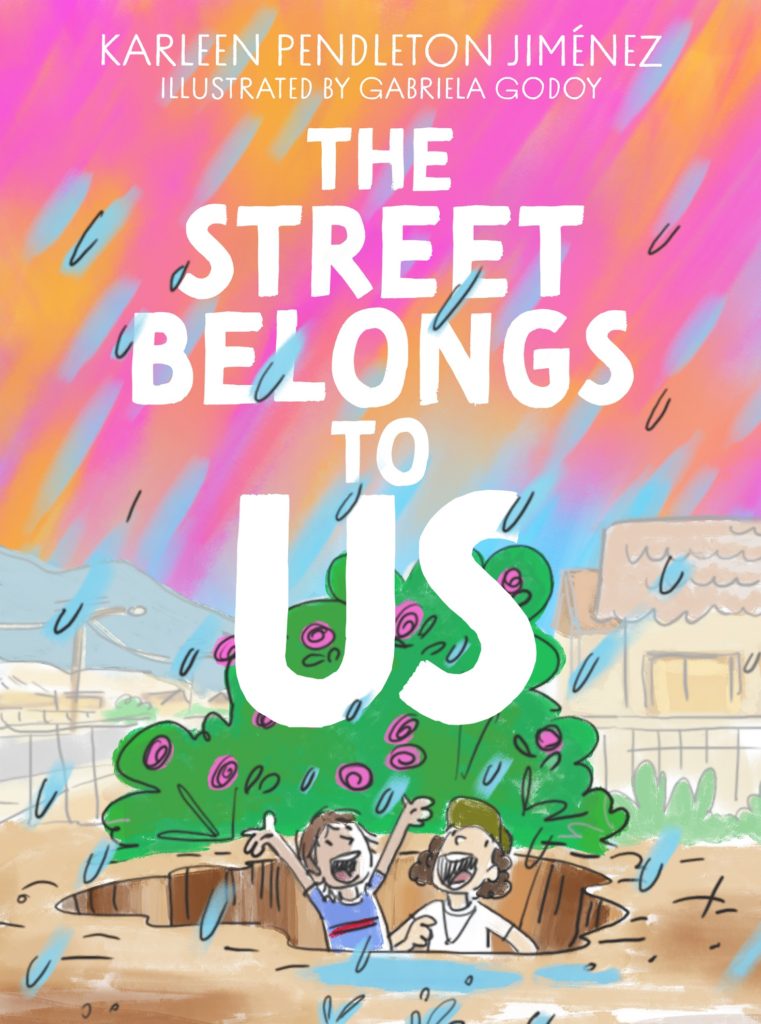
The Street Belongs to Us by Karleen Pendleton Jiménez; Illustrated by Gabriela Godoy (Arsenal Pulp Press)
Recommended Reading Age: 11+
The Street Belongs to Us celebrates the potential of imagination, the childhood joy of summer vacation, and the inevitability of growing up.
Alex and her best friend Wolf live on Muscatel Street in 1984 Los Angeles. Alex wears her hair short and prefers her brother’s hand-me-downs. She longs for her father who left her family three years ago. Her friend Wolf is a troubled boy who has withdrawn into himself, choosing to wear only a soldier’s uniform since his mother died. As summer begins, their neighbourhood is torn up for construction, leaving a street of mud, holes and gravel, which the children use to convert their street into a “battleground”. When Alex and Wolf are together, especially in their headquarters in a deep trench near Alex’s house, they put aside their worries, dig holes, and plan battles in their “war” against the neighbourhood kids. Gabriela Godoy’s black and white illustrations whimsically realize their lively world, where the thrill of the unexpected lies just around the corner.
Beyond the thrill of their daily street battles, Alex and Wolf interact with their cultural context, family dynamics, and several serious topics. Alex’s Nana has Alzheimer’s disease, but she is wise, having survived the Mexican Revolution, the Spanish flu and immigration. She shares her candid opinions with Alex and Wolf, asserting that some things should remain buried. Woven throughout the novel are Nana’s stories from history and descriptions of the Mexican dishes she makes. These provide an important glimpse into the dynamics of an extended family, Mexican American culture and an immigrant’s experience.
Wolf’s grief for his mother has made him withdraw emotionally and socially. Though intelligent and inquisitive, he gets into frequent trouble at school. When his father begins a relationship with another woman, he feels even more excluded. Alex is maturing, and the changes to her body (along with her disdain for “girl” things) fill her with uncertainty. When she worries about her growing chest, Wolf observes that “it must be up to you. If you decide to be a guy, then your chest, whatever it looks like, will be a guy’s chest because it’s yours” (p. 189). Although she has a close relationship with her mother, Alex yearns to reunite with her absent father. When she finally tracks him down, she discovers a truth that shatters her impressions, yet allows her to move forward.
The Street Belongs to Us is a tender, touching story that balances the carefree joy of childhood with the bittersweet reality of having to grow up. It lingers in the psyche long after the final page.
© Arpita Ghosal and Sayak S-G, SesayArts Magazine, 2021
About The Author
Arpita Ghosal and Sayak S-G
Arpita Ghosal and Sayak S-G are avid readers. They love music and books, and to talk about them. At any time of day, they are likely to have their noses in books, ideally with a bubble tea in hand.

